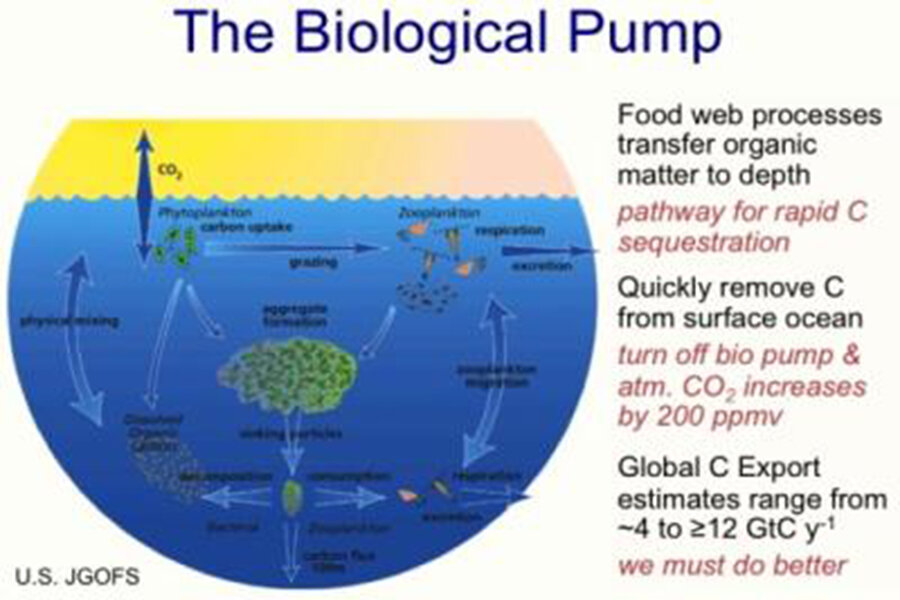How do oceans absorb carbon dioxide? Scientists find clues.
Loading...
Are you grateful that it's not 850 degrees Fahrenheit outside right now, like the surface of Venus? You can thank some of the ocean's tiniest and simplest creatures, who help trap most of our heat-trapping carbon dioxide emissions in the ocean.
The ocean's biological pump, exports organic carbon from the upper part of the ocean into the deeper layers below, "through sinking particulate matter, largely from zooplankton feces and aggregates of algae," say researchers, who published their findings in a paper titled "Global assessment of ocean carbon export by combining satellite observations and food-web models" in the journal Global Biogeochemical Cycles.
The color of ocean waters is an indicator of the type of phytoplankton biomass and its composition. For example – green ocean water means the particular area probably contains a lot of phytoplankton. Blue water could mean that portion of the ocean has less phytoplankton.
Using satellite images, the team of researchers examined the color of ocean waters which helped them to zero in on the different types of phytoplankton present in oceans. Among other things, the images also helped them to determine the size and pigmentation of the phytoplankton, David Siegel, director of the Earth Research Institute at UC Santa Barbara, and an author of the paper told the Monitor.
The observations were helpful in monitoring the strength and efficiency of the biological pump within the ocean. "It matters how big and small the plankton are, and it matters what the energy flows are in the food web," said Dr. Siegel.
Lots of big phytoplankton would mean that there is greater productivity of carbon happening in the upper layers of the ocean, "Hence, export will be efficient," Siegel told the Monitor.
There are two processes through which carbon is stored within the oceans. Oceans absorb carbon dioxide from the atmosphere and through oceanic conveyer belts that act as physical pumps; the churning takes place that carries the carbon dioxide to deeper layers of the ocean.
However, in the case of biological pump, carbon reaches deep ocean waters through zooplankton or aggregation of phytoplankton. Carbon can be stored within the oceans for a very long time-- ranging from a few seasons to centuries.
Movement of carbon within the oceans is called a flux. The current global carbon export flux caused by sinking particles in oceans stands at 6 petagrams per year. A petagram is a quadrillion grams, or about 1.1 billion US tons. Annual global carbon emissions from fossil fuels stands at about 9 petagrams.
"We need to understand where carbon goes, how much of it goes into the organic matter, how that affects the air-sea exchanges of CO2 and what happens to fossil fuel we have emitted from our tailpipes," said Siegal. "Quantifying this carbon flux is critical for predicting the atmosphere's response to changing climates."








